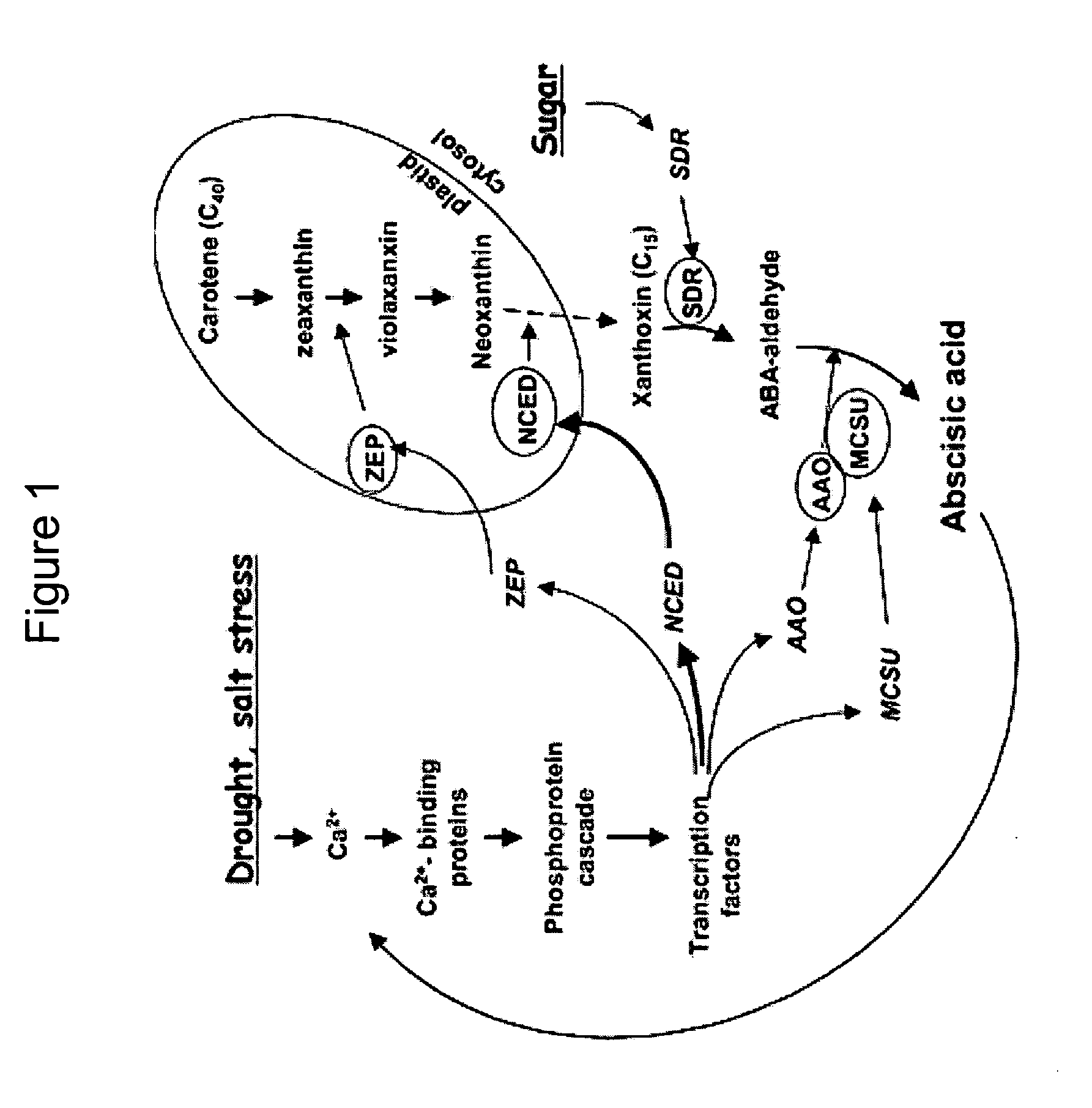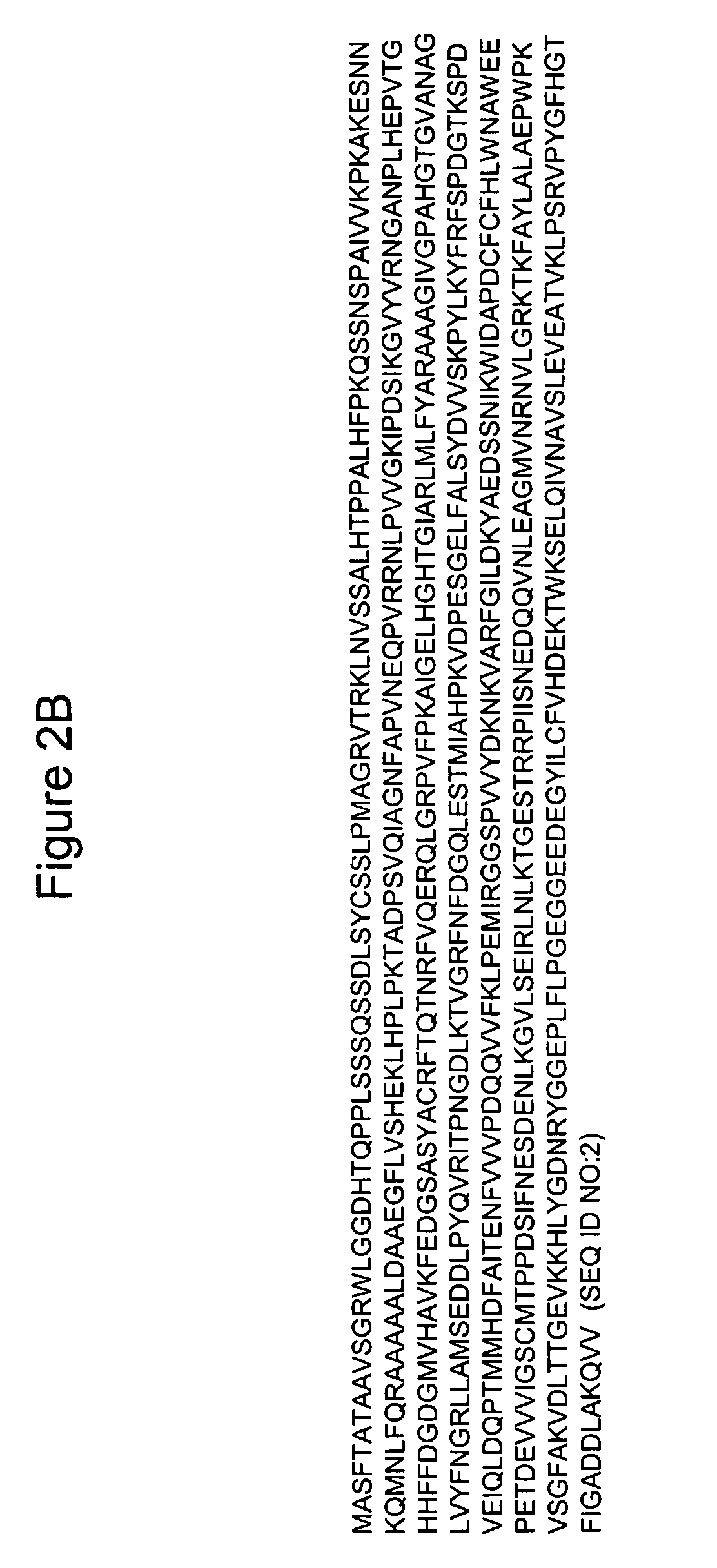Methods and materials for improving plant drought tolerance
a technology of plant material and drought tolerance, applied in the field ofnced3 nucleic acids and polypeptides, can solve the problems of low yield of plant material, seeds, fruit and other edible products, and the inability to grow enough food crops for the population, and achieve the effect of prolonging dormancy and improving seed germination
- Summary
- Abstract
- Description
- Claims
- Application Information
AI Technical Summary
Benefits of technology
Problems solved by technology
Method used
Image
Examples
example 1
Materials and Methods
[0065]Sequence searches: Query nucleic acid and amino acid sequences were searched against subject nucleic acid or amino acid sequences residing in public or proprietary databases. Such searches were done using the Washington University Basic Local Alignment Search Tool Version 2.0 (WU-Blast2) program. The WU-Blast2 program is available online from Washington University at blast.wust1.edu. Instructions explaining how to use the program also are available online at blast.wust1.edu / blast / README. A list of general and specialized sequence search services that run WU-Blast2 also is available online from Washington University (blast.wust1.edu). A WU-Blast2 service for Arabidopsis can be found on the World Wide Web at arabidopsis.org / wublast / index2. Unless otherwise noted, the following parameters of WU-Blast2 were used: Filter options were set to “default,” Output format was set to “gapped alignments,” the Comparison Matrix was set to “BLOSUM62,” Cutoff Score (S valu...
example 2
Growth Phenotypes
[0075]R1 test plants containing the pNB4_p35S:AtNCED3 construct showed a range of sizes. Approximately half of the test plants were smaller than control plants; in general, these test plants were slower growing than controls containing the pNB4_AtNCED3 construct. The other test plants did not exhibit apparent size aberrations and seemed to grow at a rate similar to control plants. The size difference within the test plants may be due to different levels of transgene expression, which in turn may be due to the different genomic positions the NCED3 transgene occupies in the different lines. It is also possible that the increased ABA levels resulting from the overexpression of NCED3 could account for a slightly impaired growth under normal conditions.
example 3
Drought Phenotypes of R1 Plants
[0076]Ten pairs of R1 plants, each pair consisting of one control plant (containing pNB4_AtNCED3) and one test plant (containing pNB4_p35S:AtNCED3) were transplanted to pots containing soil. The plants in each pair were matched by size. Plants were allowed to grow in soil for 18 days before being subjected to drought treatment, which was carried out by withholding water for 8 or for 10 days. For pairs of plants that showed evidence of phenotype after 8 days, water was added to revive plants. For the others, water was added after 10 days. Drought symptoms the recovery therefrom were assessed by visual observation.
[0077]Of the 10 pairs of plants, three pairs failed to show clearly defined symptoms following a 10-day drought treatment. The comparisons between control and test plants with regard to drought symptoms and drought recovery were optimized when using pairs of plants grown side-by-side in single pots, since results from growing control and test p...
PUM
| Property | Measurement | Unit |
|---|---|---|
| volume | aaaaa | aaaaa |
| volume | aaaaa | aaaaa |
| time | aaaaa | aaaaa |
Abstract
Description
Claims
Application Information
 Login to View More
Login to View More - R&D
- Intellectual Property
- Life Sciences
- Materials
- Tech Scout
- Unparalleled Data Quality
- Higher Quality Content
- 60% Fewer Hallucinations
Browse by: Latest US Patents, China's latest patents, Technical Efficacy Thesaurus, Application Domain, Technology Topic, Popular Technical Reports.
© 2025 PatSnap. All rights reserved.Legal|Privacy policy|Modern Slavery Act Transparency Statement|Sitemap|About US| Contact US: help@patsnap.com



